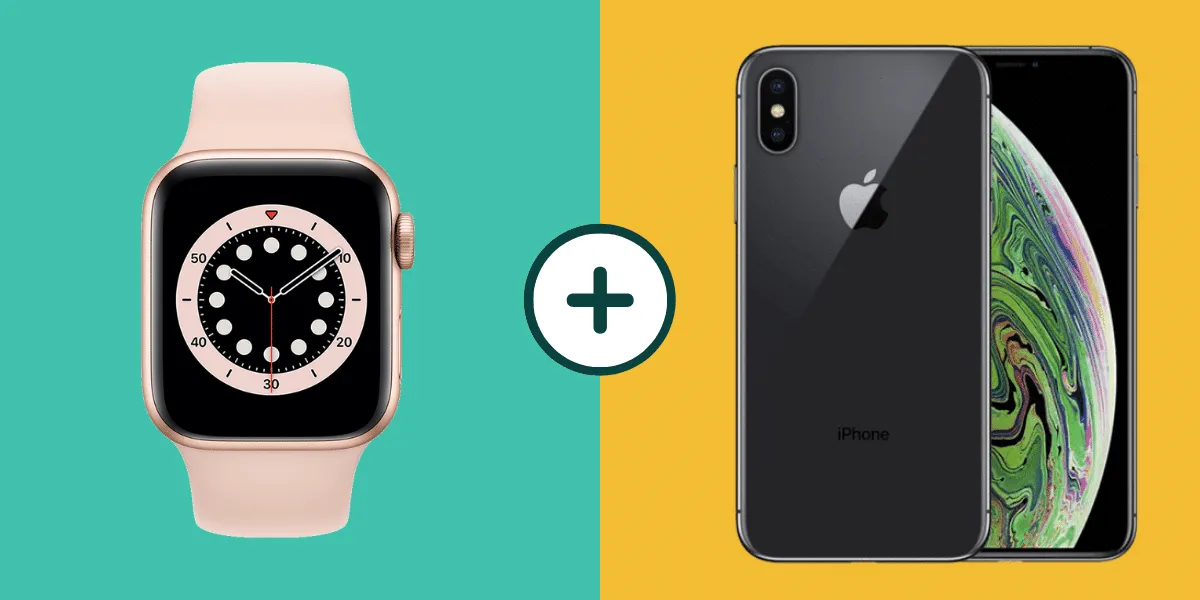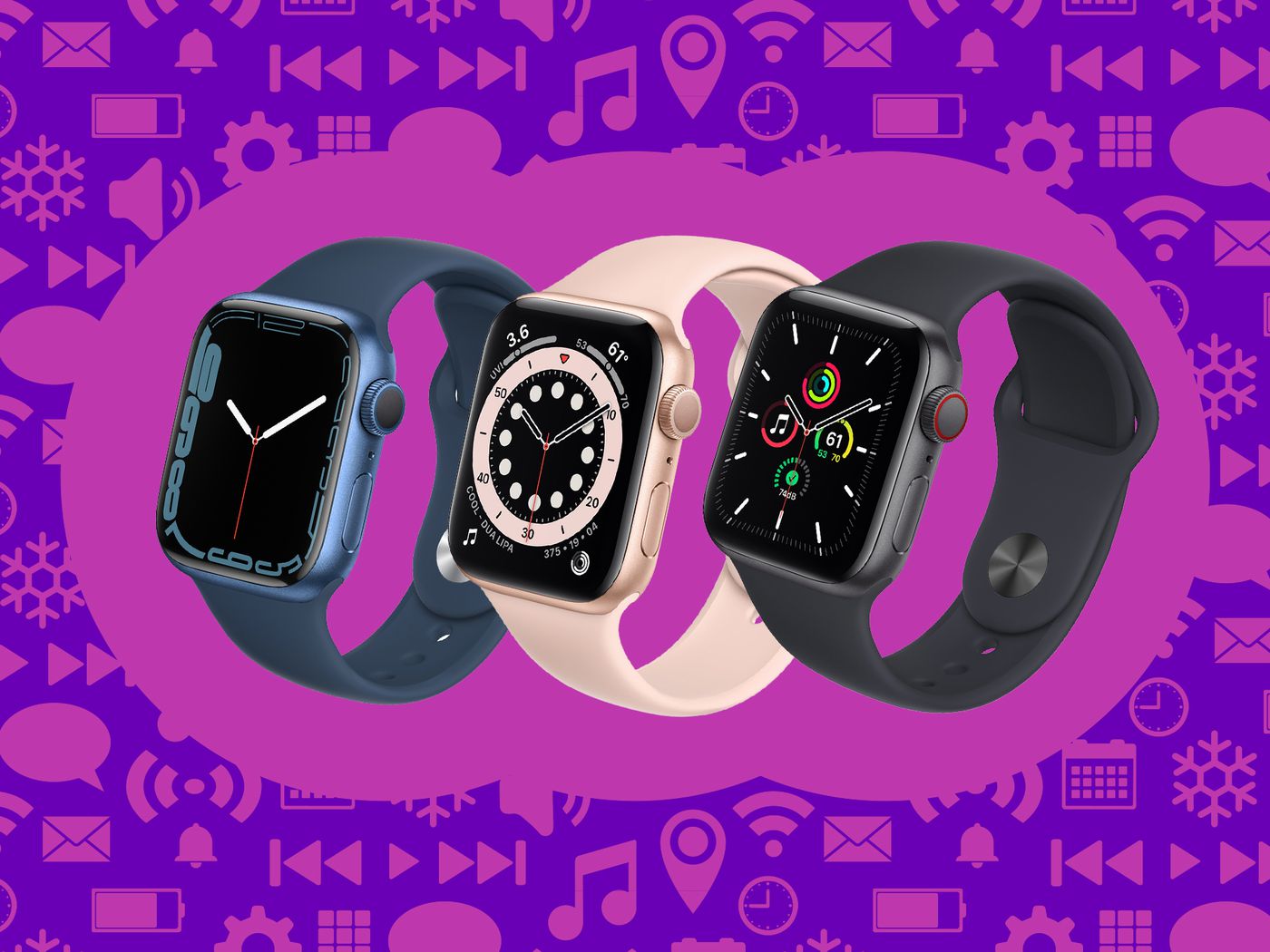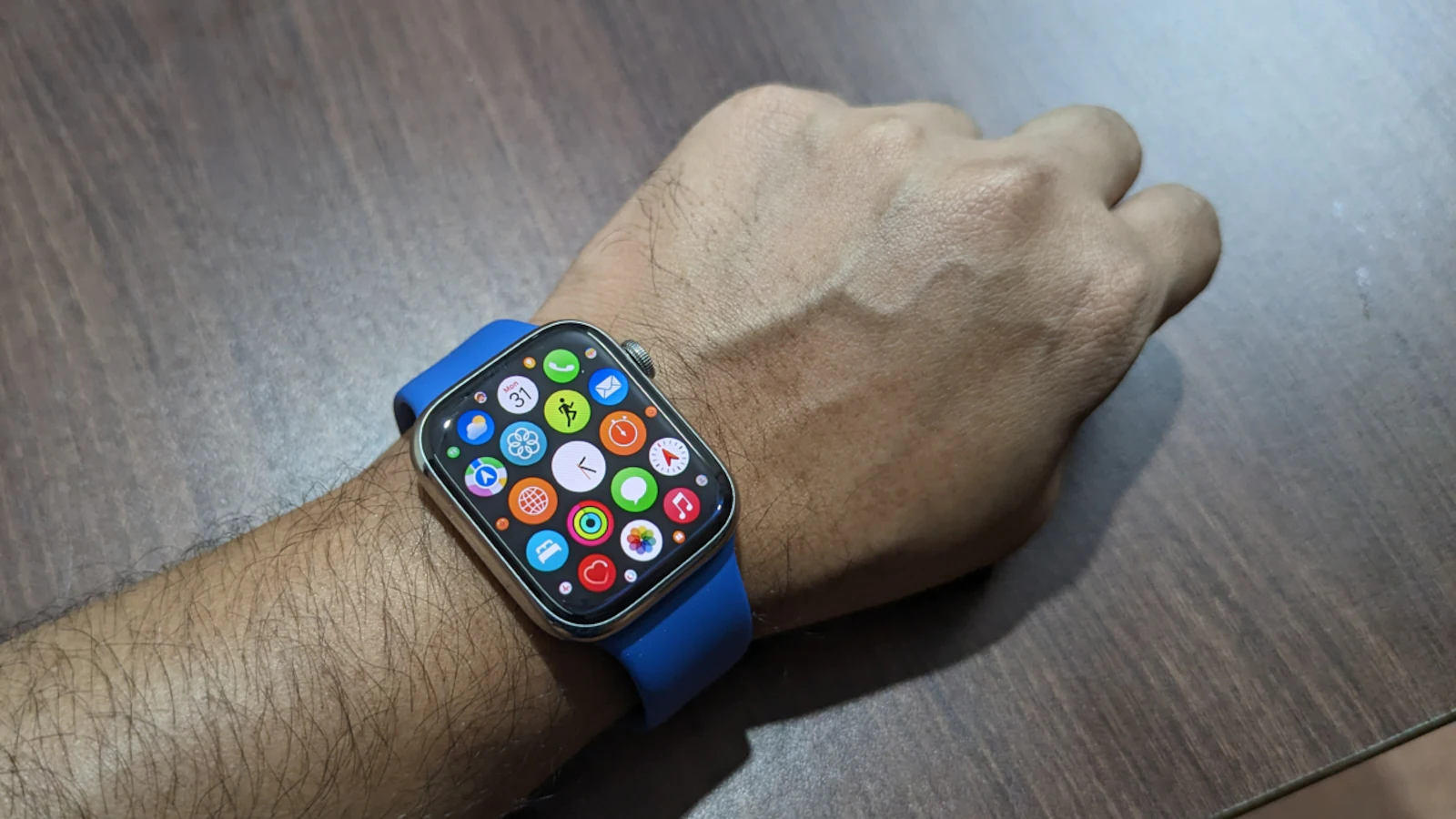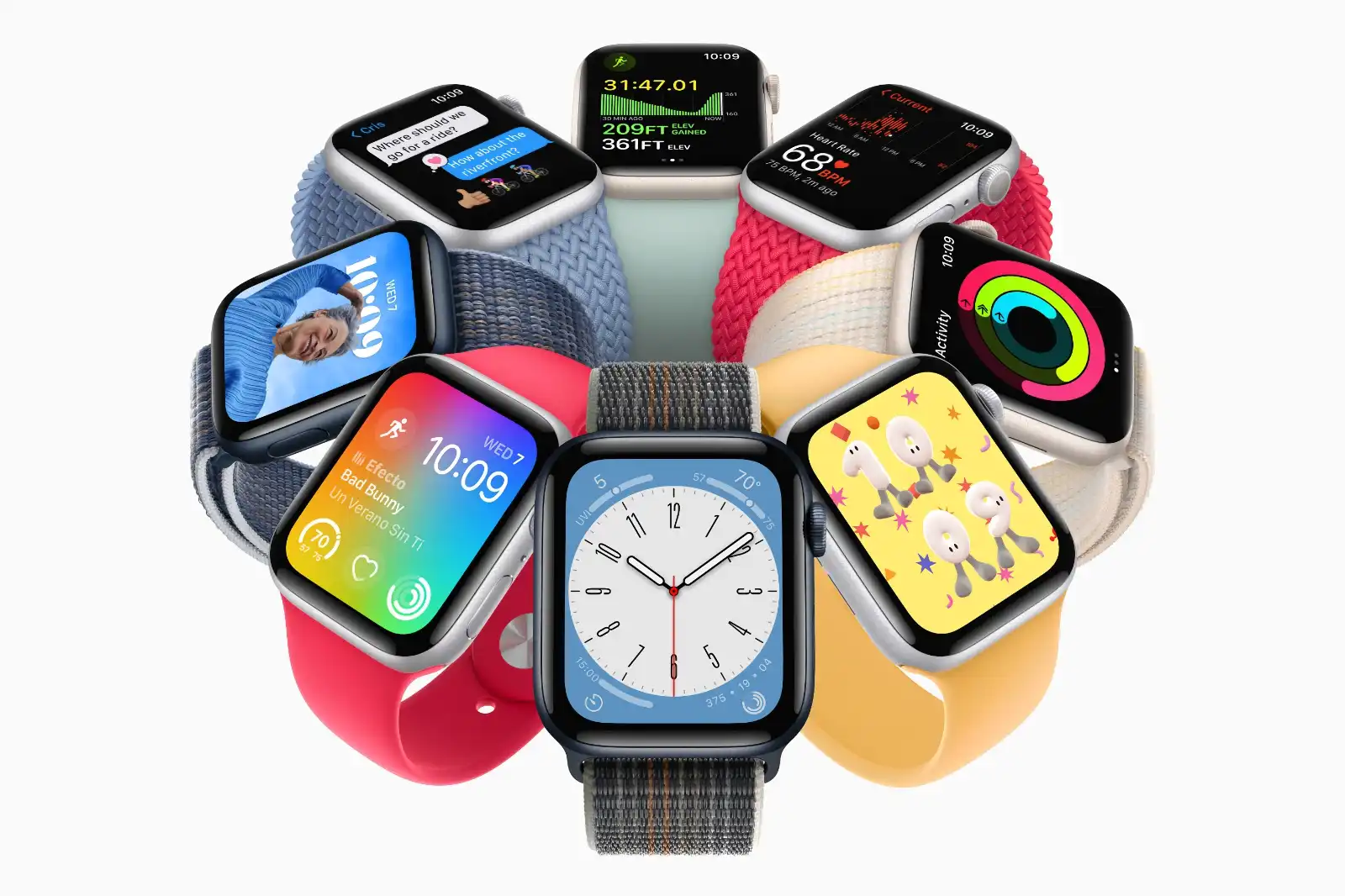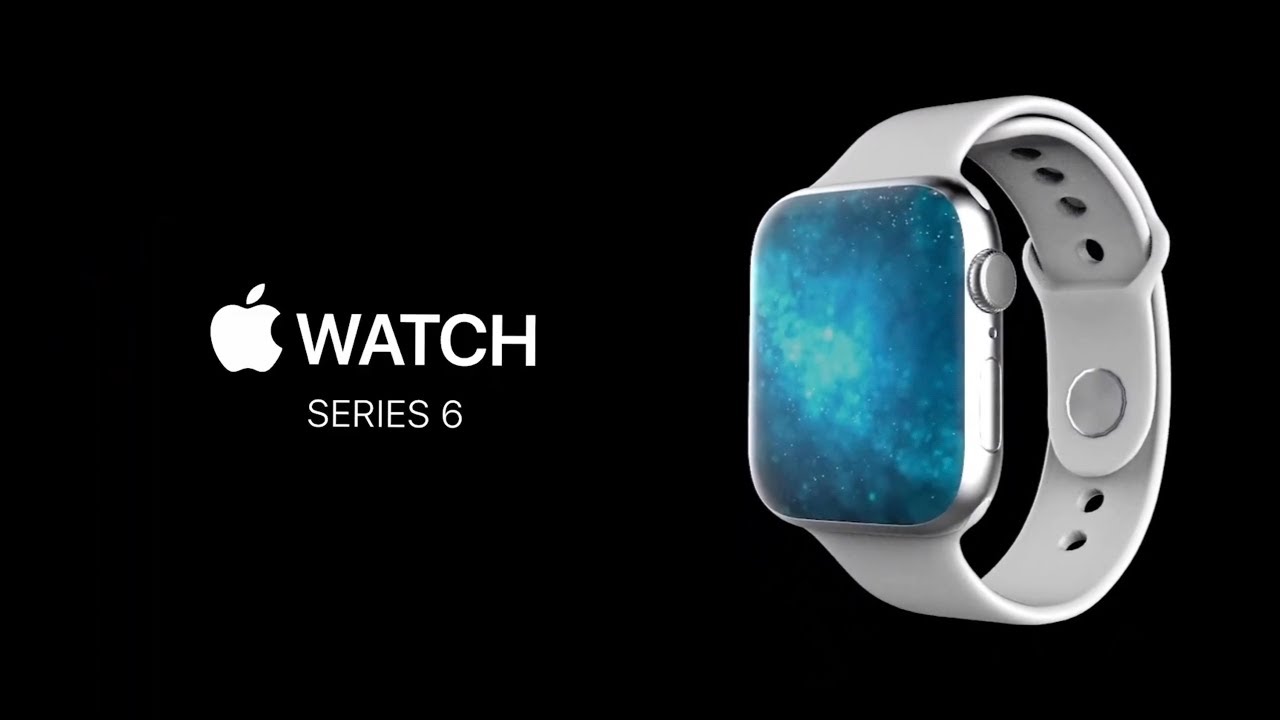Introduction
Are you the proud owner of an Apple Watch but find yourself uncertain about which series you have? With the numerous iterations released over the years, it can be challenging to determine exactly which model is strapped to your wrist. Luckily, there are several methods you can employ to identify the specific series of your Apple Watch.
In this article, we will guide you through the process of identifying your Apple Watch series. Whether you inherited your watch, purchased it second-hand, or simply forgot which model you have, we’ve got you covered. By examining the model number, physical features, software settings, and other distinguishing characteristics, you’ll be able to confidently determine which Apple Watch series you own.
Knowing your Apple Watch series is essential for various reasons. It helps in troubleshooting issues, accessing compatible accessories, and staying informed about software updates and compatibility. Additionally, understanding your Apple Watch series enables you to take advantage of specific features and functionalities that may be exclusive to certain models.
So, if you’re ready to unravel the mystery of your Apple Watch series, let’s dive in and explore the different techniques you can use to identify your device.
Identifying the Apple Watch
When determining the series of your Apple Watch, there are several methods you can use to accurately identify the device. By examining the model number, physical features, software settings, and other identifying factors, you can confidently determine which series your Apple Watch belongs to.
One of the most straightforward ways to identify your Apple Watch is by checking the model number. This unique identifier can be found on the back of the watch case. Simply remove your Apple Watch from your wrist and look for the engraving on the underside. The model number will typically start with the letter “A” followed by a series of digits. You can then search for this model number on Apple’s official website to determine the corresponding series.
In addition to the model number, you can also examine the physical features of your Apple Watch to help identify its series. Each series tends to have distinct design elements that can differentiate them. For example, the Apple Watch Series 4 and later models feature a larger display and a digital crown with haptic feedback, while the Series 3 and earlier models have a smaller display and a digital crown without haptic feedback.
If you have an iPhone paired with your Apple Watch, you can utilize the Apple Watch app on your iPhone to identify its series. Open the Apple Watch app, tap on the “My Watch” tab, and select “General” followed by “About.” Here, you will find information about your Apple Watch, including the model, serial number, and software version. The model name displayed will indicate the series of your Apple Watch.
If you don’t have access to your iPhone or prefer to check the settings directly on your Apple Watch, you can do so by navigating to the “Settings” app on the device. Scroll down and select “General,” then tap on “About”. Here, you will find detailed information about your Apple Watch, including the model, serial number, and software version.
By examining these identifying factors – the model number, physical features, and software settings – you will be able to confidently identify the series of your Apple Watch. With this knowledge, you can take full advantage of the specific features, compatibility, and software updates tailored to your watch series.
Checking the Model Number
One of the most reliable ways to determine the series of your Apple Watch is by checking the model number. This unique identifier can be found on the back of the watch case and can provide valuable information about the specific series of your device.
To find the model number, simply remove your Apple Watch from your wrist and turn it over to examine the underside of the watch case. You will notice a small engraving that includes various pieces of information, including the model number. The model number typically starts with the letter “A” followed by a series of digits.
Once you have located the model number, you can use Apple’s official website to determine the corresponding series. Visit the Apple support site and navigate to the section where you can identify your specific product model. Enter the model number into the provided search bar or select the appropriate series from the available options.
Alternatively, you can also use third-party websites that specialize in identifying Apple products. These websites often have databases that contain information about different Apple Watch models, allowing you to quickly identify the series based on the model number.
It’s important to note that the model number alone may not provide all the specific details about your Apple Watch series. However, it serves as a valuable starting point in your quest for identification.
By checking the model number on the back of the watch case and utilizing the available resources, you can confidently determine the series of your Apple Watch. This information will be key in accessing compatible accessories, troubleshooting issues, and staying up to date with software updates tailored to your watch series.
Examining the Physical Features
In addition to checking the model number, you can also identify the series of your Apple Watch by examining its physical features. Each series tends to have distinct design elements that can help differentiate them from one another.
One noticeable physical feature that can indicate the series of your Apple Watch is the size and shape of the display. For example, the Apple Watch Series 4 and later models feature a larger display that spans closer to the edges of the watch case, providing a more immersive viewing experience. In contrast, the Series 3 and earlier models have a smaller display with thicker bezels surrounding it.
Another distinguishing physical feature is the digital crown. The digital crown is the small dial on the side of the Apple Watch that can be rotated and pressed. Starting from the Apple Watch Series 4, the digital crown is equipped with haptic feedback, meaning it provides subtle vibrations when rotated or pressed. This feature can help indicate if your watch belongs to the Series 4 or later models.
The materials used for the watch case can also provide clues about the series of your Apple Watch. For instance, the Apple Watch Series 5 and later models are available in titanium and ceramic options, in addition to the aluminum and stainless steel options offered in previous series. By examining the materials used in the construction of your watch case, you can narrow down the possible series it belongs to.
The band compatibility is another aspect worth considering when determining the series of your Apple Watch. Each series tends to have specific band types and sizes that are designed to fit that particular series. For instance, the Apple Watch Series 4 and later models introduced a new band size, accommodating larger wrists.
Keep in mind that while physical features can provide helpful indicators, they may not always guarantee accurate identification. Apple has made various updates and refinements to the design of each series, so it’s important to consider multiple factors when identifying your Apple Watch.
By carefully examining the physical features such as the display, digital crown, case materials, and band compatibility, you can gain valuable insights to help identify the series of your Apple Watch. These details will prove useful in troubleshooting issues, finding compatible accessories, and maximizing the capabilities of your specific watch series.
Utilizing the Apple Watch App on iPhone
If you have an iPhone paired with your Apple Watch, you can leverage the Apple Watch app to easily determine the series of your device. This dedicated app provides valuable information about your watch, including its model, serial number, and software version.
To access the Apple Watch app, locate and open it on your iPhone. It typically appears as a gray icon with a silhouette of the Apple Watch. Once opened, you will be directed to the app’s main dashboard, which gives you an overview of your Apple Watch’s settings and features.
Tap on the “My Watch” tab at the bottom of the screen to access more in-depth information. Within this tab, you will find various settings and options related to your Apple Watch. This is also where you can find specific details about your watch series.
Scroll down the list of options until you see the “General” section. Tap on “General” to expand the menu and reveal additional settings. Within the General settings, tap on “About” to view detailed information about your Apple Watch.
In the About section, you will find relevant details such as the model, serial number, and software version of your Apple Watch. The model name displayed here will indicate the series of your watch. For example, if it mentions “Apple Watch Series 6,” then you have the latest generation of Apple Watch.
If you are unable to locate the Apple Watch app on your iPhone, ensure that it is installed. In some cases, the app may be hidden or removed from the home screen. You can easily reinstall the app from the App Store if needed.
By leveraging the Apple Watch app on your iPhone, you can quickly and conveniently determine the series of your Apple Watch. This knowledge will facilitate troubleshooting, compatible accessory selection, and staying up to date with software updates specific to your watch series.
Employing the Watch Settings on the Apple Watch
If you prefer to check the settings directly on your Apple Watch, you can utilize the built-in Watch app to identify its series. By navigating through the settings menu on the watch, you can access detailed information about your device.
To begin, locate and tap the “Settings” app on your Apple Watch. This app is represented by a gray icon with a gear symbol. Once opened, you will be presented with a range of settings and customization options.
Scroll down the settings menu and look for the “General” option. Tap on “General” to access a variety of general settings for your Apple Watch. Within the General section, you will find relevant information about your watch.
Tap on the “About” option to view detailed information about your Apple Watch. This will display important details such as the model, serial number, and software version. The model name displayed here will indicate the series of your watch. For instance, if it shows “Apple Watch Series 5,” then you have a Series 5 Apple Watch.
If you have trouble finding the “About” option, you can also try using the search feature on your Apple Watch. Simply swipe down on the home screen or press the digital crown to activate the search function. Type in “About” and select the corresponding option to access the detailed information.
Using the Watch settings on your Apple Watch is a straightforward and convenient way to identify the series of your device. It provides you with the necessary information to troubleshoot issues, select compatible accessories, and stay informed about software updates tailored to your watch series.
Inspecting the Watch Case Material
The material used for the watch case can provide valuable insights into identifying the series of your Apple Watch. Each series tends to offer different options in terms of case material, allowing for a unique and personalized experience.
One common material used for Apple Watch cases is aluminum. Aluminum is lightweight, durable, and offers a sleek look. It has been utilized in multiple series, including the Apple Watch Series 1, 2, 3, and 6. If your Apple Watch has an aluminum case, you can narrow down the possible series it belongs to.
Stainless steel is another popular material for Apple Watch cases. The use of stainless steel adds elegance and durability to the watch. Stainless steel cases were introduced with the Apple Watch Series 0 and have been used in subsequent series, such as the Series 4 and 5. If your Apple Watch features a stainless steel case, it is likely a later series model.
Ceramic cases are available in certain Apple Watch series, such as the Apple Watch Series 2 and 3, as well as the Series 5 and 6. Ceramic is known for its scratch-resistant properties and lustrous appearance. If your Apple Watch has a ceramic case, it is most likely from one of these series.
Starting from the Apple Watch Series 5, titanium cases have been introduced as an additional option. Titanium offers a lightweight yet robust build and a distinct look. If your Apple Watch features a titanium case, it is from the Series 5 or a later model.
By carefully inspecting the material of your Apple Watch case, you can narrow down the series it belongs to. Keep in mind that additional factors, such as the design and features, should also be considered for accurate identification.
Understanding the material of your Apple Watch case not only helps in identifying the series but also contributes to selecting compatible accessories, maintaining the watch’s appearance, and ensuring a seamless user experience.
Analyzing the Band Type
Another aspect to consider when identifying the series of your Apple Watch is the type of band that it is paired with. Apple offers a variety of bands that are compatible with different series, and the band type can provide valuable clues about the series of your watch.
One common band type is the Sport Band, which is made of a smooth and durable fluoroelastomer material. This band has been available for various Apple Watch series, including the Apple Watch Series 0, 1, 2, 3, 4, 5, and 6. If your Apple Watch is equipped with a Sport Band, it could belong to any of these series.
The Milanese Loop is a popular magnetic band option that adds a touch of elegance to the Apple Watch. It is made of woven stainless steel mesh and is available for several series, such as the Apple Watch Series 0, 1, 2, 3, 4, 5, and 6. If your Apple Watch features a Milanese Loop band, it could belong to any of these series.
The Leather Loop is another band type to consider. Made of genuine leather, this band provides a sophisticated look and feel. The Leather Loop was introduced with the Apple Watch Series 3 and has been available in subsequent series, such as the Series 4, 5, and 6. If your Apple Watch is paired with a Leather Loop band, it is likely from one of these series.
Other band types to look out for include the Link Bracelet, which is crafted from stainless steel and was introduced with the Apple Watch Series 0; the Modern Buckle, a refined leather band for a classic look, available for various series; and the Solo Loop and Braided Solo Loop introduced with the Apple Watch Series 6, offering a secure and comfortable fit without a clasp.
By analyzing the type of band your Apple Watch is paired with, you can narrow down the possible series it belongs to. However, keep in mind that Apple Watch bands are interchangeable, and you may have swapped out the original band for a different one.
Understanding the band type of your Apple Watch provides valuable insights into its series and allows you to select compatible bands and accessories that enhance its overall aesthetics and functionality.
Assessing the Watch Face Options
The Apple Watch offers a wide range of watch face options that can provide valuable insights into identifying the series of your device. Each series tends to introduce new watch face designs and features, allowing for a more personalized and customizable experience.
One way to assess the series of your Apple Watch is by examining the available watch face options on your device. Start by accessing the watch face selection menu by firmly pressing on the display or swiping right from the watch face. This will reveal a gallery of different watch faces that you can choose from.
Pay attention to any watch faces that are specific to certain series. For example, the Infograph and Infograph Modular watch faces were introduced with the Apple Watch Series 4 and are available in subsequent series as well. If your Apple Watch features these watch faces among its options, it is a good indication that you have a Series 4 or later model.
Similarly, there are watch faces that are exclusive to certain series. For instance, the Hermès and Nike watch faces are designed specifically for the Apple Watch Hermès and Apple Watch Nike editions, respectively. If your Apple Watch offers these unique watch faces, it will indicate that you have one of these special edition series.
Additionally, consider the complications available on your watch face. Complications are small widgets that display various types of information, such as weather conditions, activity progress, or upcoming calendar events. Some complications may require specific hardware features that are only available in certain series.
While the watch face options can provide valuable insights, it’s important to note that watch faces can be downloaded and customized on different series. Therefore, it’s advisable to consider other identifying factors, such as the case material, physical features, or model number, to accurately determine the series of your Apple Watch.
By assessing the available watch face options on your Apple Watch, you can gain valuable clues about its series. This knowledge allows you to further personalize your watch by selecting the watch face design that aligns with your preferences and takes advantage of the exclusive features available in your specific series.
Conclusion
Identifying the series of your Apple Watch is important for troubleshooting issues, selecting compatible accessories, and staying informed about software updates tailored to your specific model. In this article, we explored various methods to help you determine the series of your Apple Watch.
We started by checking the model number engraved on the back of the watch case, which can be cross-referenced with Apple’s official website or third-party databases. Examining the physical features, such as the display size, digital crown, case materials, and band types, can also provide valuable clues about the series of your Apple Watch.
Utilizing the Apple Watch app on your iPhone allows you to access detailed information about your watch, including the model, serial number, and software version. Alternatively, you can access the watch settings directly on your Apple Watch to find similar details about the model and software version.
Inspection of the watch case material provides insights into the series, as each series offers different options such as aluminum, stainless steel, ceramic, or titanium. Analyzing the band type can also be helpful, as certain bands are associated with specific series.
Lastly, assessing the watch face options can provide further clues about the series, taking into consideration exclusive watch faces and complications that may be specific to certain models.
By combining these identification methods and considering multiple factors, you can confidently determine the series of your Apple Watch. This knowledge allows you to optimize your Apple Watch experience by accessing the specific features, troubleshooting any issues, and staying up to date with software updates that are tailored to your specific series.









